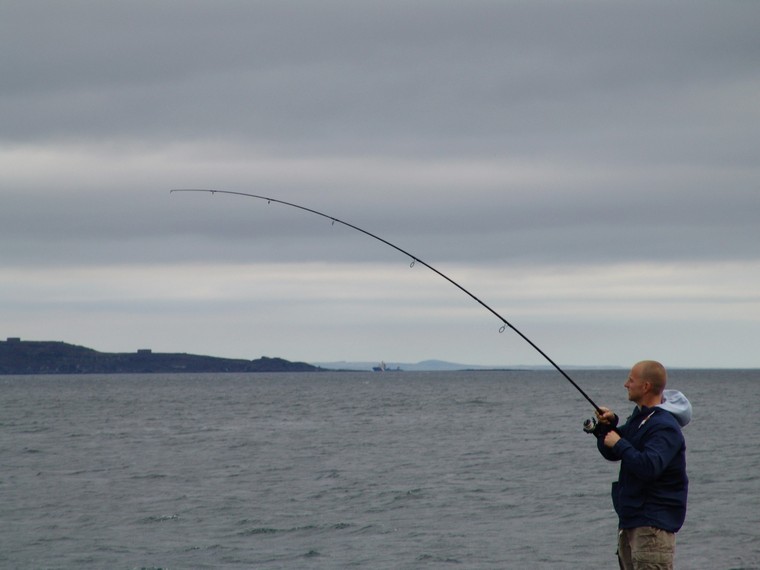
5 reasons why you should consider saltwater float fishing
Float fishing is probably not the first thing that comes to mind when you think about sea fishing. But you could be missing out on a lot of fun.
Here’s a situation:
You’ve been fishing for hours but nothing seems interested apart from the crabs… Maybe there’s just nothing there. But then you see hundreds of sprats jumping up less than twenty yards from your lifeless rod tips. A better look reveals the predators that chase them, causing big swirls. First you see the mackerel, then, even closer, bass… You stare at your rod tips again, full of hope, but still not a twitch…
Here’s another one:
You have been fishing on a breakwater for hours, casting past the snaggy rocks and the kelp onto the sand: nothing. Out of frustration you decide to do something very foolish: you cast your rig straight into the snaggy rocks. Before you can put your rod down you get a smashing bite and the next moment you’re into a very good fish. But within seconds the fish dives in between the barnacle covered rocks and cuts you off. What do you do? Try again and risk losing another fish?
In both cases the solution couldn’t be more simple: use a float rig. A float allows you to:
1. Target fish that are feeding in mid or topwater
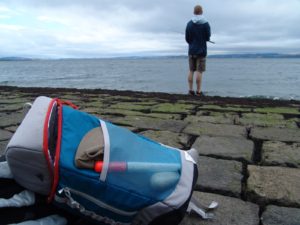
When fish are chasing bait fish near the surface, there is no chance of them noticing your bottom bait. Of course you could use top or mid-water lures, or, when fishing from a height, tie your hook length several feet from your weight, but using a float is way more effective. You can fish a float at any depth, even on or near the bottom. You can adjust the depth until you’re onto the fish. Which other method would allow you to do that?
2. Avoid getting snagged
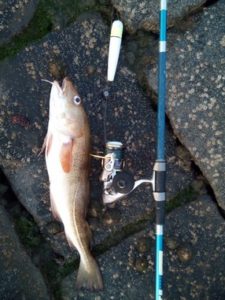
Snags can really ruin one’s pleasure in fishing, but it’s often the snaggy areas that hold the most fish. Using a float allows you to fish the bait just above the bottom. When you’re into a fish, your chances of landing it are much higher, as the float keeps the line out of the snags. I have managed to catch cod with this method from marks that are impossible to fish with bottom baits. Of course, when fishing mid-water for pollock or mackerel, the chances of getting snagged are even lower. For other tips on fishing rough ground marks click here.
3. Cover more ‘ground’
Unlike fishing a bait nailed to the bottom, a float allows you to cover a lot more ground. Simply let your float drift in the tide until you find a shoal of fish.
4. Present a moving bait
A lot of times, a slowly moving bait (e.g. a mackerel strip or a sprat) looks a lot more attractive than a static one. It’s a nice way to target flounder at close range, when the sea is calm enough. Adjust the depth until the lead reaches the bottom. The float will drag the weight and the trace with your bait along the bottom, until the stirred up sand attracts the attention of the fish.
5. Use lighter gear
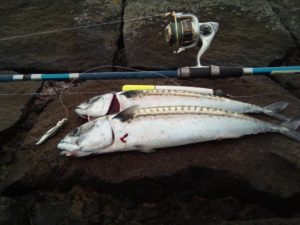
As you’re not casting heavy weights (my average sea float takes an ounce) you can use a lot lighter tackle, and have a lot more fun playing fish. In most situations a 12 ft. barbel or carp rod is ideal. You can also use a spinning rod, but I find that a longer rod makes it easier to set the hook and take slack out of the line.
When I fish rougher ground for bigger fish like pollock or cod, I tend to use a bass rod to be able to bully the fish out of the kelp. ‘Flattie’ type rods are also very good for float fishing. They have a similar casting range to carp rods but are easier to hold for hours on end (carp rod blanks tend to have heavier top sections). I have been having a lot of fun with my Shakespeare Agility flattie rod lately (see picture).
Float fishing tips
Keep it simple

The general rule is true here as well. All you need to tie a float rig are: a float, a drilled bullet weight, two beads, a hook, a swivel, and a piece of mono to tie a stop knot (see picture). Sea fishing floats come in all shapes and sizes, but nine times out of then a 35g cigar float (combined with a 1oz bullet weight, as shown in the picture) is perfect. It’s heavy enough to reach a good distance, but not too heavy for species like garfish. You can vary the length of your hook length according to the conditions. Longer snoods might give a more natural presentation, while shorter ones tangle less while casting. Two feet, I would say, is a good compromise.
Vary the depth
Keep varying the depth until you find the fish and adjust it again if you stop getting bites. If you want to stay in mid-water, you have to fish deeper and deeper while the tide is coming in – and shallower and shallower while the tide is going out. Fishing at the right depth can make all the difference between catching or blanking.
Always use hook length with a lower breaking strain than your main line
This may sound obvious, but using a lighter breaking strain hook length will save you a lot of tackle. This way, if you get snagged all you lose is your hook. If you use the same or a higher breaking strength line, the line is likely to snap at the top end of the swivel, and you end up losing everything but your stop knot. In most situations I use a 15lbs mainline and a 12lbs snood. I mostly use sunset amnesia for my hooklengths.
Choose the right stop knot material
Powergum is excellent for tying stop knots. The elasticity and thicker diameter makes sure it doesn’t move during the cast and it doesn’t wear out as much as regular mono. The only time I prefer to use mono is when I am fishing at depth. Because a powergum stop knot is bigger, coils can get stuck behind it during the cast.
Use rubber beads
Hard plastic beads can damage the float after a while, resulting in the line getting stuck in the cracks. If you use rubber beads, you avoid this problem.
Grease the line
To avoid the line catching on rocks or kelp you have to make sure it stays buoyant. The simplest way to do that is to grease it. There are specialised products, like mucilin line grease, but vaseline works as well. A floating line also makes it a lot easier to set the hook.
If you’re using braid, there is no need to grease the line.
Don’t overcast
At times you have to cast a bit further to reach the fish but most of the time they can be found very close in. Especially wrasse and pollock can be right underneath your feet. Nothing beats the excitement of a float diving under only inches from your rod tip.
Which sea fishing float should you buy
There are loads of different sea fishing floats on offer, most of them made of polystyrene with a hard plastic tube in the middle. I use these yellow Tronixpro ones most of the time. They cast well and are very visible, even at range. The smaller sizes are great if you’re fishing close in. In some conditions (at dusk, for example) a red float can be more visible. In those scenario’s I use these, from Dennett.
Float fishing with braid
If you’re just starting out with (sea) fishing I wouldn’t recommend using braid in the beginning. Mono can be a lot more forgiving and doesn’t tangle that easily. Float fishing with braid has a few advantages though, apart from the obvious advantage of the thinner diameter. Braid is boyant which limits the risks of the line sinking and getting snagged. Other than mono , braid has zero stretch, which makes it a lot easier to set the hook at distance. I find I ‘miss’ a lot less bites when I use braid.
Tangles and wind knots can be a serious problem though. To prevent this I use a long mono leader (the maximum depth I want to fish at plus a few feet extra) so the float slides on the mono and not on the braid. The mono also works as a shock leader, which prevents the hook from pulling out of the fish’s mouth.
Float fishing baits
Sprats
The appearance of your bait is a lot more important when you’re float fishing than when you’re fishing on the bottom. Sprats might not have the strongest scent, but they certainly look the part. An absolute killer, especially for mackerel. You can buy sprats at most fishmongers. A 1 lbs bag of frozen sprats only costs a few pounds and will last you for a few sessions. Simply take as much out of the freezer as you need.
Mackerel
Mackerel is another very good float fishing bait. Thin strips of white belly are perfect for mackerel and garfish, while bigger strips or sections are great for pollock.
Limpets

Limpets are a great bait for wrasse. Always worth a go when the lure fishing is slow. Carry a blunt knife in your tackle box, and remove a few from the rocks whenever you need some.
Ragworm
Ragworm is a great bait for pollock and wrasse. Just nip it through the head and let it move in the current.
Prawns
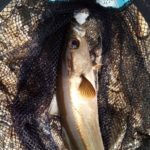
Prawns are another great float fishing bait. As most supermarkets stock prawns it’s also a great ‘last minute’ bait. Prawns catch wrasse, bass, cod, flounder, and even pollock.
Peeler crab
The number one bait for summer cod, but also great for bass.
There are a lot of other suitable float fishing baits, for example live sandeels or shrimps, but the ones above are the baits I use the most – and the ones that are also the easiest to collect.
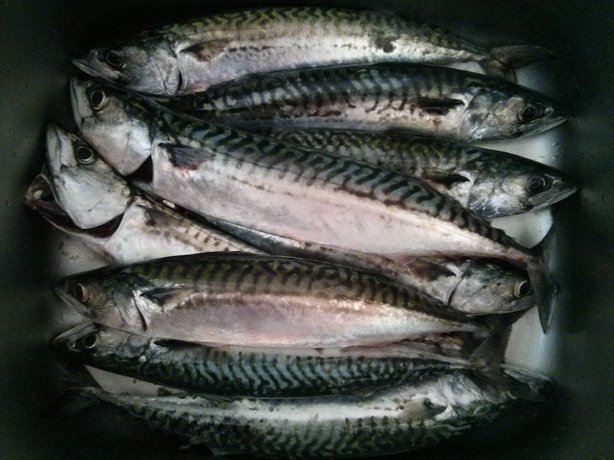
If you have some other tips, or simply want to share your own float fishing experiences, please do so in the comment section below.
And if you’d like to receive an email every time I publish a new post, please subscribe to my newsletter. Tight lines!
Disclosure: if you purchase anything using the links in this blog post, I might make a commission. Affiliate programs and affiliations include, but are not limited to, the eBay Partner Network. It doesn’t cost you a penny more to buy via these affiliate links (and you don’t have to use them of course) but it helps me to keep this blog going. Thanks!
13 thoughts on “5 reasons why you should consider saltwater float fishing”
Very insightful and good explanations. I am starting float rig fishing for perch also, for same reasons.
Thanks, happy you found it useful. Good luck with the perch fishing!
good read, clear, concise and helpful. Thanks for the help
Thanks!
Thank you very much, very clear and understandable cant wait to get out float fishing for first time in the sea
Thanks! Good luck with the float fishing, hope you enjoy it.
HI, I have been sea fishing for many years now, but I have never float fished, I would like to give it a go very soon, my question is can you advise me on a suitable rod that will do float and spinning, hope you can help, thanks
Hi David, For general float fishing in the sea I prefer a rod that’s at least 10ft long and reasonably light (both in weight and in casting range). If you have a carp rod lying around, that would probably do the job. So would a long, heavy-ish spinning rod. If you don’t have either I would recommend buying some kind of estuary rod. The rod I have been using the last few years is the Shakespeare Agility Flattie. It has a 1-3 oz casting range and is very light. It’s suitable for spinning too. If you’re float fishing over rough ground for bigger pollock (5lb+) or cod I would go for something slightly heavier like a bass rod. I hope that answers your question. Tight lines!
I’ve recently ditched all of my old heavy duty sea fishing gear in favour of a float fishing set up. I wish I’d done it years ago. With my current set up I can fish just about anywhere, either sea or coarse.
Question regarding float fishing; can a Paternoster Rig be tied under a float?, if YES how?
Thanks for your question. Yes, you can tie a paternoster/ flapper rig under a float. Just put a bead underneath your float before you tie your rig swivel to your mainline. The weight will be at the bottom of the rig. I hope that answers your question
It’s now 2022 and I have come across write up tips and information about float fishing I did start sea float fishing but just got laughed at, and that put me off but you have just made me want to have another go thank you
I know how you feel I was the same until I read that a static line bait is sitting on the bottom getting eaten by crabs when a float bait just drifts over the top of them and the fish seem to go for a moving bait